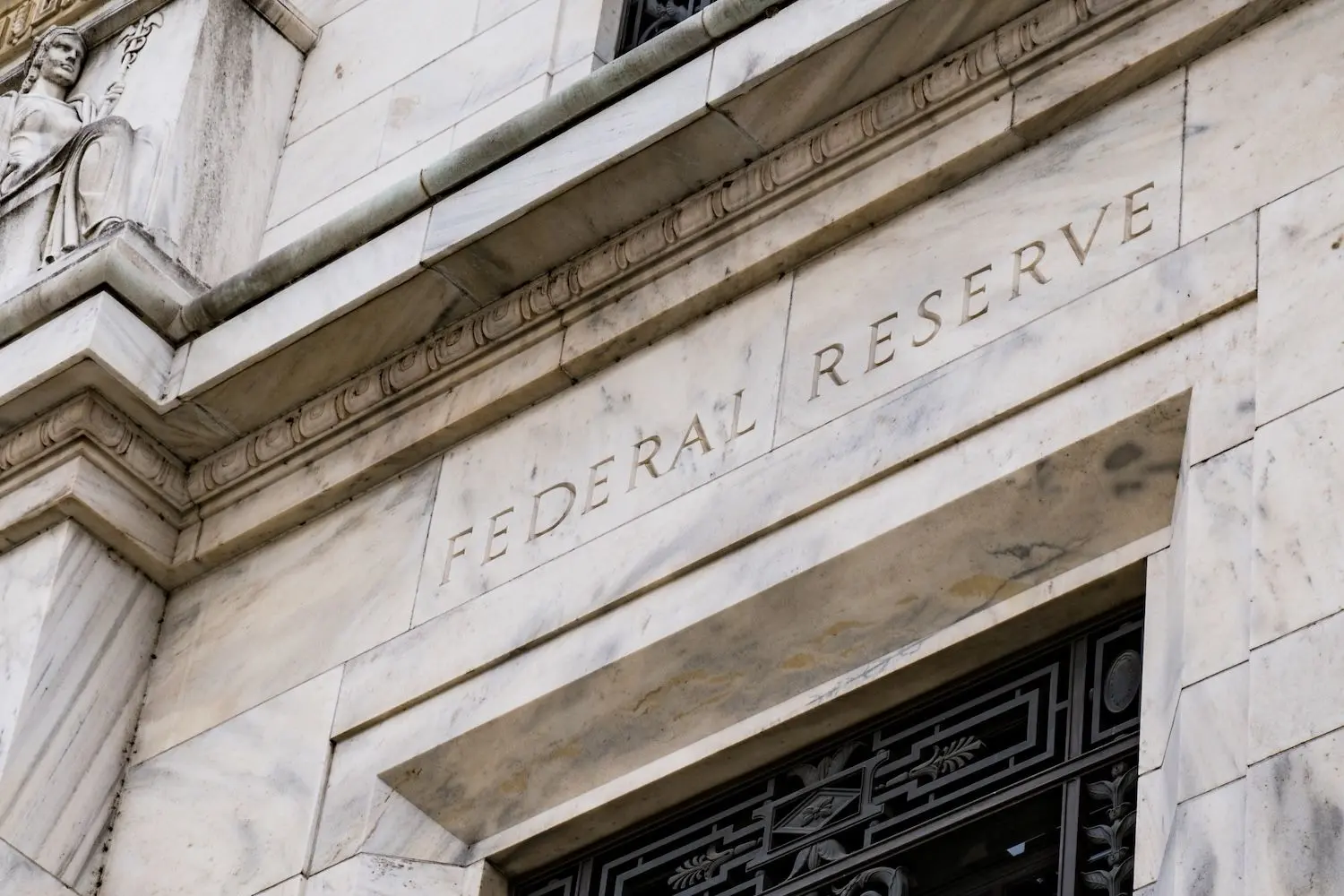The Federal Reserve cut its benchmark interest rate by 25 basis points to a target range of 3.75%–4.00% and announced plans to end its quantitative tightening (QT) program in December, a decision that analysts say reinforces the macro backdrop for digital assets but leaves markets focused on future policy guidance rather than today’s move.
The rate reduction, widely expected by markets, comes as the Fed signaled it will halt the runoff of Treasury and mortgage-backed securities starting December 1, ending a program that had reduced the central bank’s balance sheet from nearly $9 trillion to $6.59 trillion since mid-2022.
Two members of the Federal Open Market Committee (FOMC) dissented, one favoring a deeper cut, another preferring to hold rates steady — underscoring the divided outlook within the Fed on how fast to ease.
Speaking with Yellow.com, Fadi Aboualfa, Head of Research at Copper, said the long-term Bitcoin uptrend “remains intact” as traders had priced in the decision well ahead of the meeting.
“Everyone’s watching gaps in the CME, but the real signal is in ETF absorption and steady institutional buying,” he said, noting that miner issuance “barely registers anymore.”
According to Aboualfa, Bitcoin’s price stability and compressed volatility indicate that the asset is maturing.
“The more Bitcoin behaves like a mature asset, the stronger the long-term compounding story becomes,” he said. “Near-term, $111k is the line, dips keep getting absorbed by accounts building multi-month positions.”
Nicolai Søndergaard, Research Analyst at Nansen, said the 25bp rate cut was already priced in, with Bitcoin trading near $113,000 ahead of the announcement.
“The critical variable is Powell’s forward guidance on the 2025 easing cycle,” he said. “Crypto needed Powell to signal aggressive easing, not a shallow, wait-and-see approach.”
Søndergaard added that on-chain data showed “institutional players were positioned cautiously ahead of the announcement,” with muted smart money flows suggesting large investors are waiting for clearer signals on the Fed’s terminal rate path.
“The cut itself isn’t the catalyst, it’s whether the Fed commits to sustained easing into 2026,” he said.
Greg Magadini, Director of Derivatives at Amberdata, said the decision “came in as expected” alongside plans to end QT, adding that it reinforces the current low-volatility environment in crypto.
“We’re still in the early stages of a cutting cycle and easing liquidity will help push prices higher,” he said. “There are opposing forces between classic crypto cycles and a new class of BTC investors coming into the market since the launch of IBIT, but overall liquidity will keep the market grinding higher in a controlled fashion.”
In traditional markets, the Fed’s move signaled a cautious shift toward easing amid a softening labor market and inflation still above target.
“Forward guidance suggesting no further hikes is what markets wanted,” Aboualfa had said earlier in the week. “That reassurance alone keeps risk assets supported.”
Ryne Saxe, CEO of Eco, noted that rate moves also influence stablecoin issuers’ margins.
“Interest rate float is an amazing business when it’s good — Gen Re and Tether are prime examples,” he said. “But most issuers should assume interest margin trends toward zero; the real value will come from services built on top of their digital dollars.”
The Fed described economic growth as “moderate,” acknowledging that job gains have slowed while inflation “remains somewhat elevated.”
With QT winding down and rate cuts underway, markets now see policy easing extending into 2026, a path that, according to analysts, could sustain demand for risk assets and reinforce Bitcoin’s role as an institutional macro hedge rather than a speculative trade.

